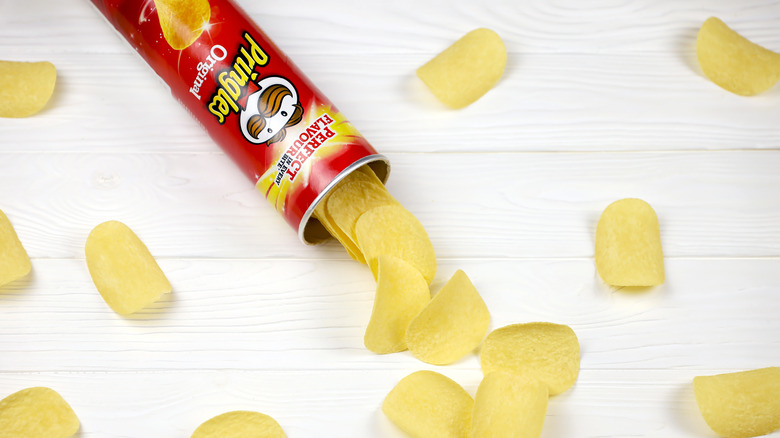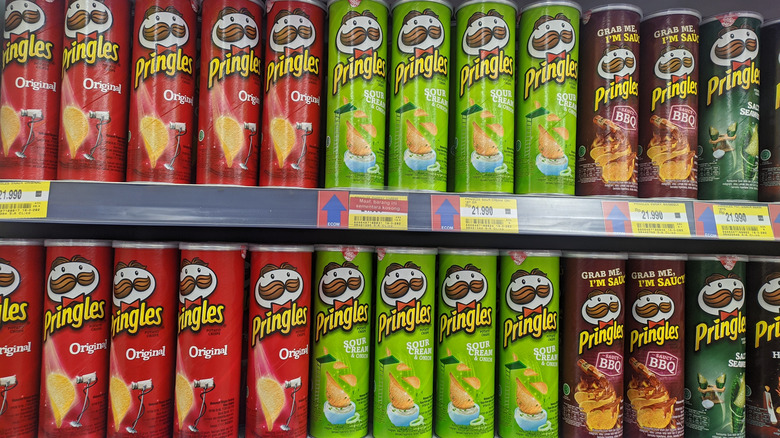The Picky Reason Pringles Don't Count As Potato Chips
When Pringles hit the shelves in 1968, they were marketed as "Pringles Newfangled Potato Chips," and newfangled they were. Instead of the bags of classic, crispy potato chips made by companies like Lay's, Procter & Gamble's Pringles came neatly stacked in cardboard tubes and had a slightly softer texture as a result of their unique production process. The Pringles recipe is so different, in fact, that shortly after their release, the Potato Chip Institute International called for P&G to stop calling them potato chips.
This was because, to the Institute, Pringles weren't "real potato chips." As stated in an article published in the Lakeland Ledger newspaper, the Institute believed a potato chip must be a "slice of fresh, raw potato, deep fried in vegetable oil, salted and packaged." Pringles did not meet that requirement, as they were made from a mixture of dried potatoes that were "later moistened, rolled out, cut into pieces and fried" (via Time).
The back-and-forth between the Institute and Pringles was dubbed "the potato chip war." It lasted for almost 10 years until P&G finally conceded and called their snack "potato crisps," a label that can still be seen on the packaging today.
Pringles are potato crisps, not chips
The Potato Chip Institute International even threatened to sue P&G for its use of the potato chip moniker. It may seem a little strange to so vehemently argue about how a snack distinguishes itself, but per the 1969 Time article, the executive vice president of the Institute, Harvey Noss Sr., thought Pringles was "trying to capitalize on the good name of the potato chip."
Aside from their flavor profile, Pringles do have a few key differences when compared to regular potato chips. Due to the way they are packaged, Pringles don't break as easily and go stale slower, two attributes the president of the Potato Chip Institute International, Francis X. Rice, admitted were advantages of the "synthetic" chip.
Pringles may have had a controversial beginning, but there's no questioning their place on snack shelves today. Despite their crisp designation, you can still find them proudly standing in the chip aisle.

